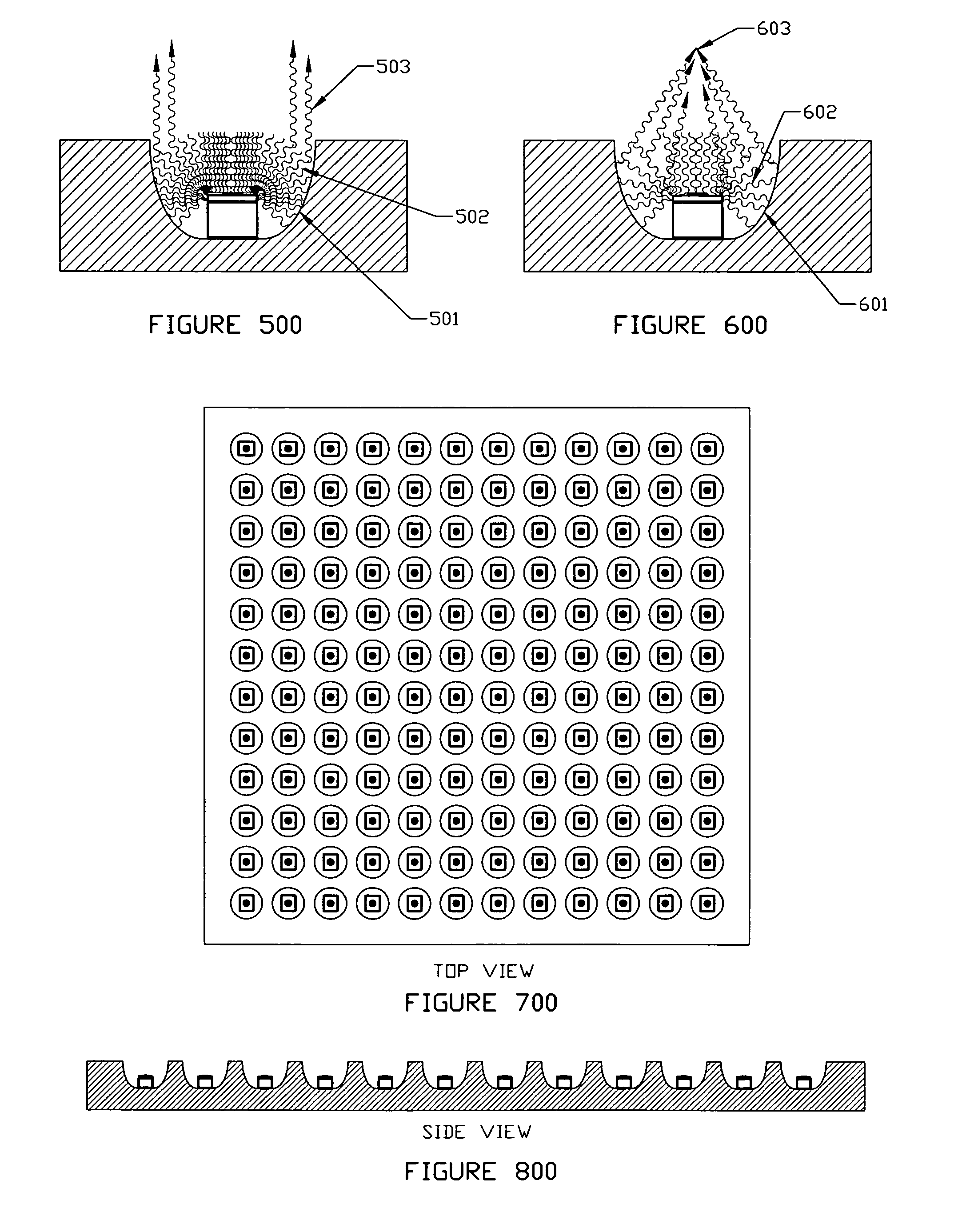Light emitting diode light source for curing dental composites
a light source and light source technology, applied in dental surgery, dental tools, manufacturing tools, etc., can solve the problems of composites, current light emitting diodes, composites that produce blue wavelengths, and no heat that can be radiated to the patien
- Summary
- Abstract
- Description
- Claims
- Application Information
AI Technical Summary
Benefits of technology
Problems solved by technology
Method used
Image
Examples
Embodiment Construction
[0059]The invention first takes the LED as an electronic component without any lenses or wires attached, FIG. 100. The LED is essentially a cube with dimensions on the order of 0.250 millimeters, FIG. 100. On the top surface is an Anode (101). The bottom surface is metallized and serves as the Cathode and the heat transfer point / medium (102). The LED also contains a layer of semiconductor that is doped with specific materials in specific concentrations to produce the desired wavelength of light (103). Finally, the LED contains a layer of semiconductor substrate (104). When electrical current is passed between the cathode (102) and the anode (101), photons of a particular wavelength (depending on the composition of the materials) are emitted from the doped semiconductor layer (103).
[0060]Secondly the invention places the LED or LED array on one side of a flat substrate in all configurations of the invention the substrate is both electrically and thermally conductive. This provides th...
PUM
 Login to View More
Login to View More Abstract
Description
Claims
Application Information
 Login to View More
Login to View More - R&D
- Intellectual Property
- Life Sciences
- Materials
- Tech Scout
- Unparalleled Data Quality
- Higher Quality Content
- 60% Fewer Hallucinations
Browse by: Latest US Patents, China's latest patents, Technical Efficacy Thesaurus, Application Domain, Technology Topic, Popular Technical Reports.
© 2025 PatSnap. All rights reserved.Legal|Privacy policy|Modern Slavery Act Transparency Statement|Sitemap|About US| Contact US: help@patsnap.com



